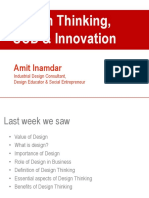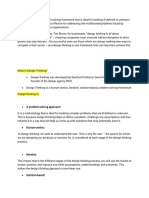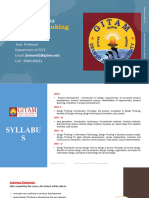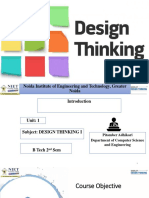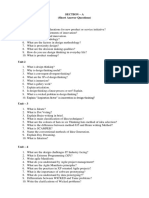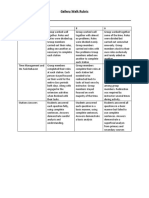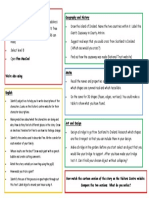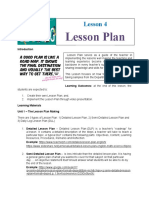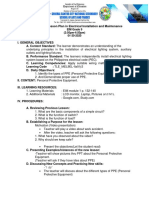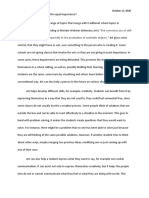0% found this document useful (0 votes)
631 views7 pagesDesign Unit 2 Notes
Design thinking is a methodology used by designers to solve complex problems. It involves brainstorming innovative solutions for customers through an iterative design process involving customers. Design thinking is used in fields like healthcare, education, and sustainability. It helps balance problem and solution focus through empathy, imagination, and reasoning. The process involves empathizing with users, defining problems, ideating solutions, prototyping ideas, and testing solutions. Empathy is key to understanding user needs and developing desirable solutions.
Uploaded by
Vivek KumarCopyright
© © All Rights Reserved
We take content rights seriously. If you suspect this is your content, claim it here.
Available Formats
Download as DOCX, PDF, TXT or read online on Scribd
0% found this document useful (0 votes)
631 views7 pagesDesign Unit 2 Notes
Design thinking is a methodology used by designers to solve complex problems. It involves brainstorming innovative solutions for customers through an iterative design process involving customers. Design thinking is used in fields like healthcare, education, and sustainability. It helps balance problem and solution focus through empathy, imagination, and reasoning. The process involves empathizing with users, defining problems, ideating solutions, prototyping ideas, and testing solutions. Empathy is key to understanding user needs and developing desirable solutions.
Uploaded by
Vivek KumarCopyright
© © All Rights Reserved
We take content rights seriously. If you suspect this is your content, claim it here.
Available Formats
Download as DOCX, PDF, TXT or read online on Scribd
/ 7








